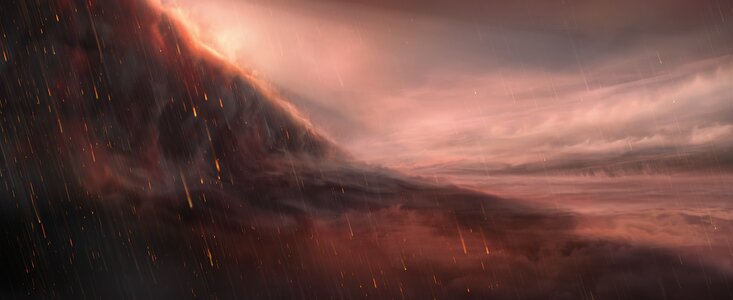Researchers using ESO’s Very Large Telescope have observed an extreme planet where they suspect it rains iron. The ultra-hot giant exoplanet has a dayside where temperatures climb above 2400 degrees Celsius, high enough to vaporize metals.

Researchers using ESO’s Very Large Telescope (VLT) have observed an extreme planet where they suspect it rains iron.
There is an exotic exoplanet, known as WASP-76b, which is located some 390 light-years away from Earth, in the constellation of Pisces. The giant planet has been observed by researchers at the University of Geneva in Switzerland using ESO’s Very Large Telescope.
This strange place has a special phenomenon: “One could say that this planet gets rainy in the evening, except it rains iron,” says professor David Ehrenreich, from the University of Geneva in Switzerland, who led the study, published in Nature.
The ultra-hot giant has a dayside where temperatures climb above 2400 degrees Celsius, high enough to vaporize metals. Strong winds carry iron vapor to the cooler night side where it condenses into iron droplets.
“Surprisingly, however, we do not see the iron vapor in the morning,” says Ehrenreich. The reason, he says, is that “it is raining iron on the night side of this extreme exoplanet.”
Like the Moon on its orbit around the Earth, WASP-76b is rotating around its axis. The same as the Moon, ‘iron rain’ planet shows only one face, its dayside, to its parent star, its cooler night side remaining in perpetual darkness.
On its dayside, it receives thousands of times more radiation from its parent star than the Earth does from the Sun. It’s so hot that molecules separate into atoms, and metals like iron evaporate into the atmosphere. The extreme temperature difference between the day and night sides results in vigorous winds that bring the iron vapor from the ultra-hot day side to the cooler night side, where temperatures decrease to around 1500 degrees Celsius.
Not only does WASP-76b have different day-night temperatures, but it also has distinct day-night chemistry. According to the new study, the astronomers identified for the first time chemical variations on an ultra-hot gas giant planet. Using the new ESPRESSO instrument on ESO’s VLT in the Chilean Atacama Desert, they detected a strong signature of iron vapor at the evening border that separates the planet’s dayside from its night side.
“What we have now is a whole new way to trace the climate of the most extreme exoplanets,” concludes Ehrenreich.
Read more about: Space



